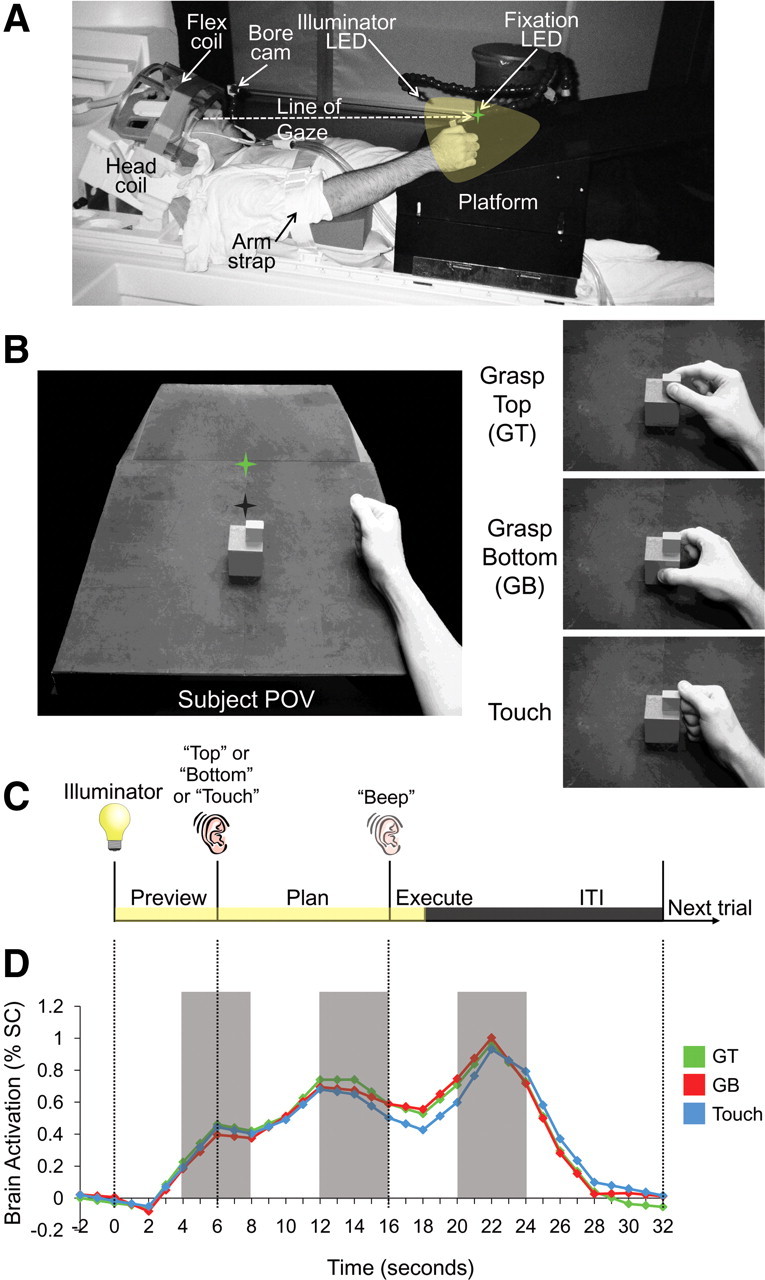Figure 1.

Experiment setup, conditions, timing, and trial-related brain activity. A, Setup from side view. The participant's head is tilted to permit direct viewing of objects on the platform. B, Experimental apparatus and graspable object shown from the participant's point of view. The same object (consisting of a smaller cube attached atop a larger cube) was always presented at the same location on the platform for every trial. Green star with dark shadow represents the fixation LED and its location in depth. Hand is positioned at its starting location. Right, The three different hand movements. C, Timing of one event-related trial. Trials began with the 3D graspable object being illuminated while the subject maintained fixation (preview phase; 6 s). Subjects were then instructed via headphones to perform one of three hand actions: grasp the top cube (Top), grasp the bottom cube (Bottom), or touch both cubes with their knuckles (Touch). This cue initiated the plan phase portion of the trial, in which, in addition to having visual information from the object, subjects also knew which hand action they were to perform. After a delay interval (10 s), subjects were cued (via an auditory beep) to perform the instructed hand movement (execute phase). Two seconds after the movement, vision of the object was extinguished and participants waited for commencement of the following trial (14 s, ITI). D, Example event-related BOLD activity from parietal cortex (posterior IPS) over the length of a trial. Events in D are time locked to correspond to events in C. Pattern classification analysis was performed on single trials based on the windowed average of the percentage signal change (% SC) corresponding to the three different time points denoted by each of the gray shaded bars (each corresponding to activity elicited from the 3 distinct trial phases preview, plan, and execute).
